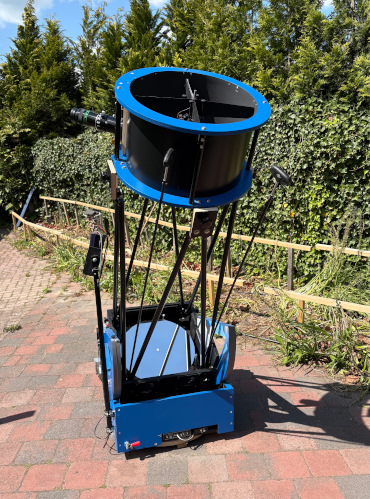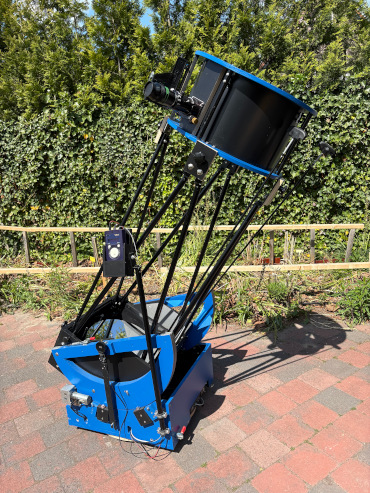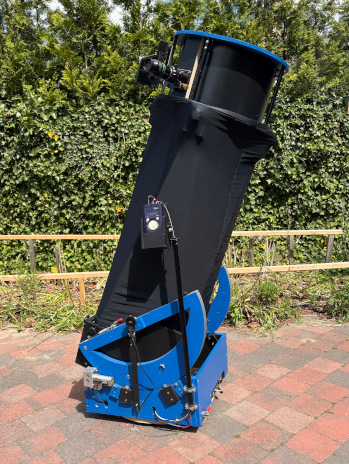
|
Single mirrored Dobsonian Telescopes
This telescope is built around a 33 cm f/4.8 mirror, made by Jan van Gastel, equiped with ServoCAT and Argo Navis. (Jan van Gastel Mirrors). This is an example a Dobsonian telescope with almost perfect optics. The mirror has an excellent 0.987 Strehl ratio (click here for an optical report). This is almost perfect and it is no wonder that it provides very sharp star images.
At the other end of the spectrum, this is a telescope build around a 18 inch f/4.8 Mike Lockwood mirror.
Or with a 20-inch f/4.0 Orion Optics mirror set....
The latest large Dobsonian telescope I built is around a 18 inch f/3.9 mirror. Originally this was one of the two 18 inch f/4.8 Mike Lockwood mirrors in the 2 x 18 inch binoscope (also in the above shown Dobsonian telescope). After I disassembled this binoscope, Jan van Gastel refigured one of the binoscope mirrors to f/3.9. (Jan van Gastel Mirrors). Also this mirror has an excellent 0.96 Strehl ratio (click here for an optical report). This warrants very nice and crisp star images! MCM-Optics in France provided the enhanced coating of the mirror (MCM-Optics). The fast mirror has a lightpath of 177 cm, and the focusser is therefore almost at eye level.


With wheelbarrow handles the telescope can be moved easily to and from a shed where it is stored. And -alas- the lightshroud is an essential part in my light polluted backyard!


Different Dobsonian TelescopesOver the years I have experimented with different designs, as shown below.

Like this one, built around a 16 inch f/4.5 Orion Optics mirror set. Bob Hogeveen is currently the owner of this telescope.

Occasionally a different design presents itself, such as in the telescope below, which is built around an 8 inch f/6.0 mirror, made by Jan van Gastel (Jan van Gastel Mirrors). This smaller telescope is very stable and is very nice to view the moon.
Or one that is suited for traveling, compact and easily fitting in a travel bag.



In yet another different style I have also built these telescopes below. The left telescope harbors a 16 inch f/4.5 and the right telescope a 13 inch f/5.0 mirror.
|


